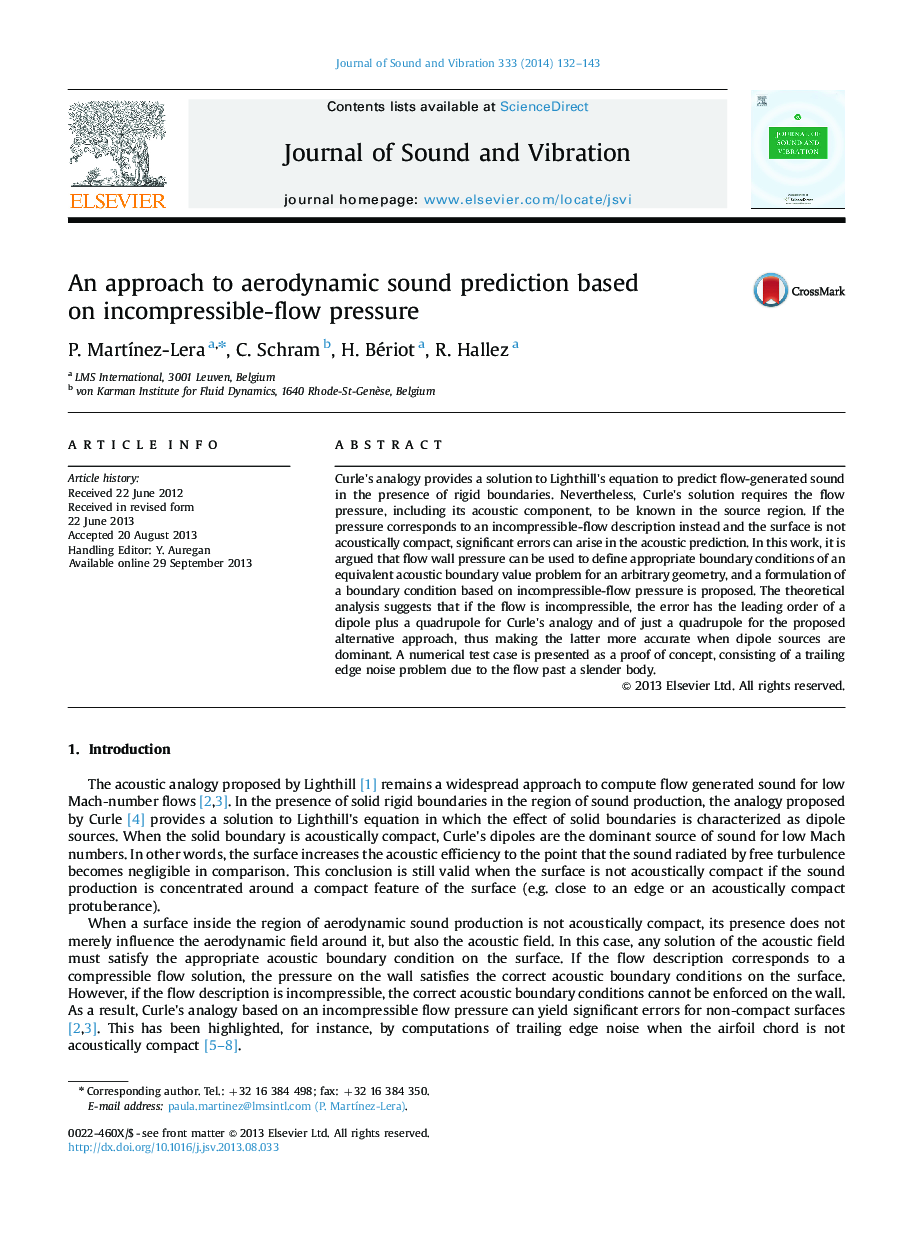| Article ID | Journal | Published Year | Pages | File Type |
|---|---|---|---|---|
| 288076 | Journal of Sound and Vibration | 2014 | 12 Pages |
Curle's analogy provides a solution to Lighthill's equation to predict flow-generated sound in the presence of rigid boundaries. Nevertheless, Curle's solution requires the flow pressure, including its acoustic component, to be known in the source region. If the pressure corresponds to an incompressible-flow description instead and the surface is not acoustically compact, significant errors can arise in the acoustic prediction. In this work, it is argued that flow wall pressure can be used to define appropriate boundary conditions of an equivalent acoustic boundary value problem for an arbitrary geometry, and a formulation of a boundary condition based on incompressible-flow pressure is proposed. The theoretical analysis suggests that if the flow is incompressible, the error has the leading order of a dipole plus a quadrupole for Curle's analogy and of just a quadrupole for the proposed alternative approach, thus making the latter more accurate when dipole sources are dominant. A numerical test case is presented as a proof of concept, consisting of a trailing edge noise problem due to the flow past a slender body.
